The city of Cremona is characterized, as is well known, by an outstanding musical tradition, which has its highest moments, on the one hand, in violin making and the figure of Antonio Stradivari and, on the other, in Claudio Monteverdi, who saw the light in the Lombard city in 1567. A festival has been dedicated to this protagonist of the history of music for more than forty years, with the most important Italian and international performers of early and baroque music converging on Cremona for a series of concerts that are not infrequently held outside the spaces expressly designed and built for musical performances, that is, in some of the places that make up the extraordinary artistic and architectural heritage that the city of the “divine Claudio” can boast.
Even in the 2024 edition of the Monteverdi Festival, concerts in deputed spaces such as the beautiful Auditorium Arvedi of the Violin Museum and Teatro Ponchielli (where a good performance ofOrpheus and Cecilia Bartoli’s scintillating concluding concert took place) were flanked by concerts and performances held in churches and palaces, sometimes open to the public for the occasion. The splendid music of Monteverdi and his contemporaries is thus given an additional faculty, in addition to that of bewitching and exciting listeners: that of opening the doors to a heritage that is often little known to citizens and outsiders alike. A heritage that, moreover, boasts an underlying consistency with the music that comes to life there, whether because of a certain chronological and stylistic congruence between architecture and scores, or because, for example in the case of sacred music, masses and motets resonate in those spaces dedicated to worship for which they were composed.
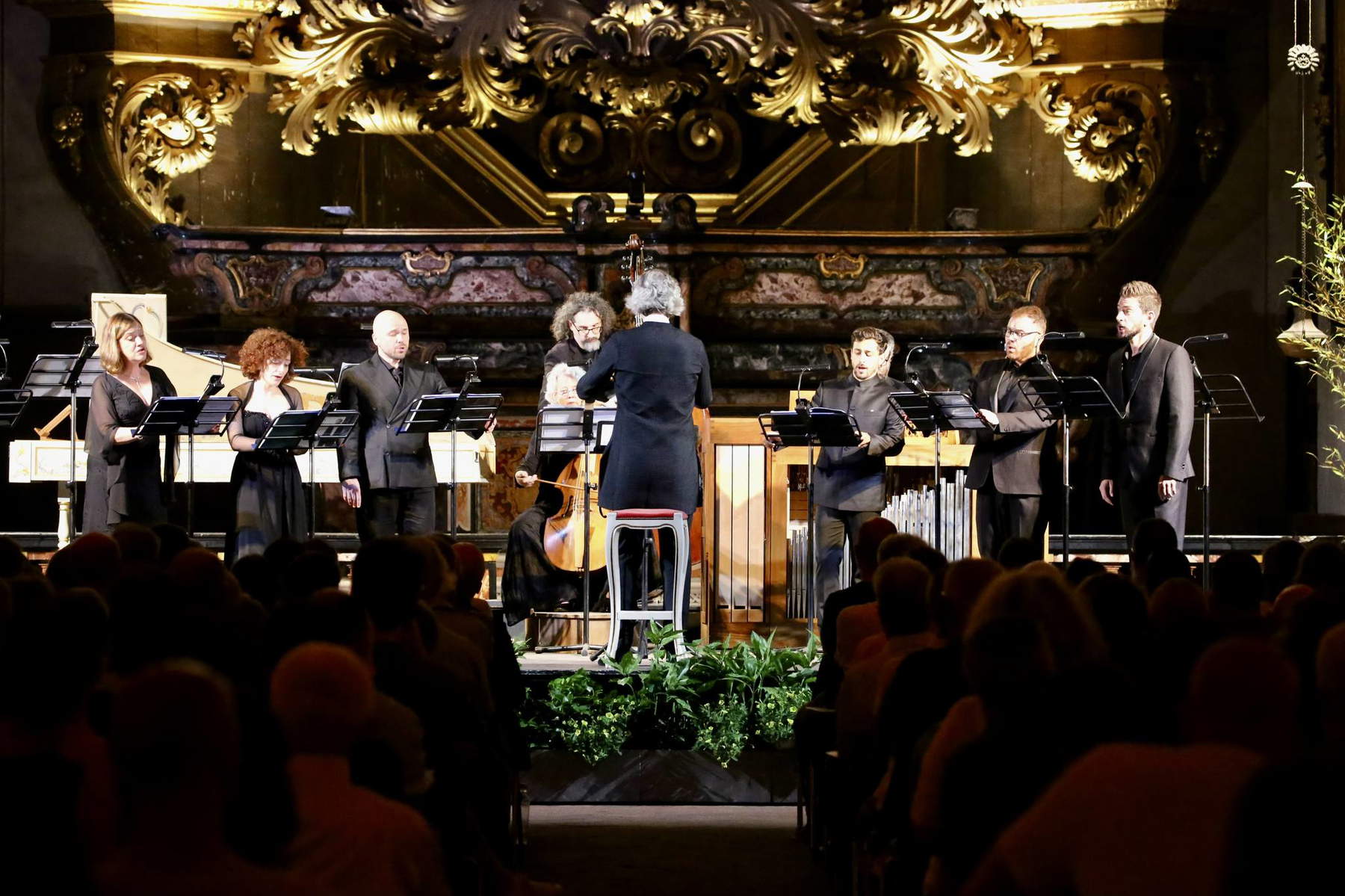
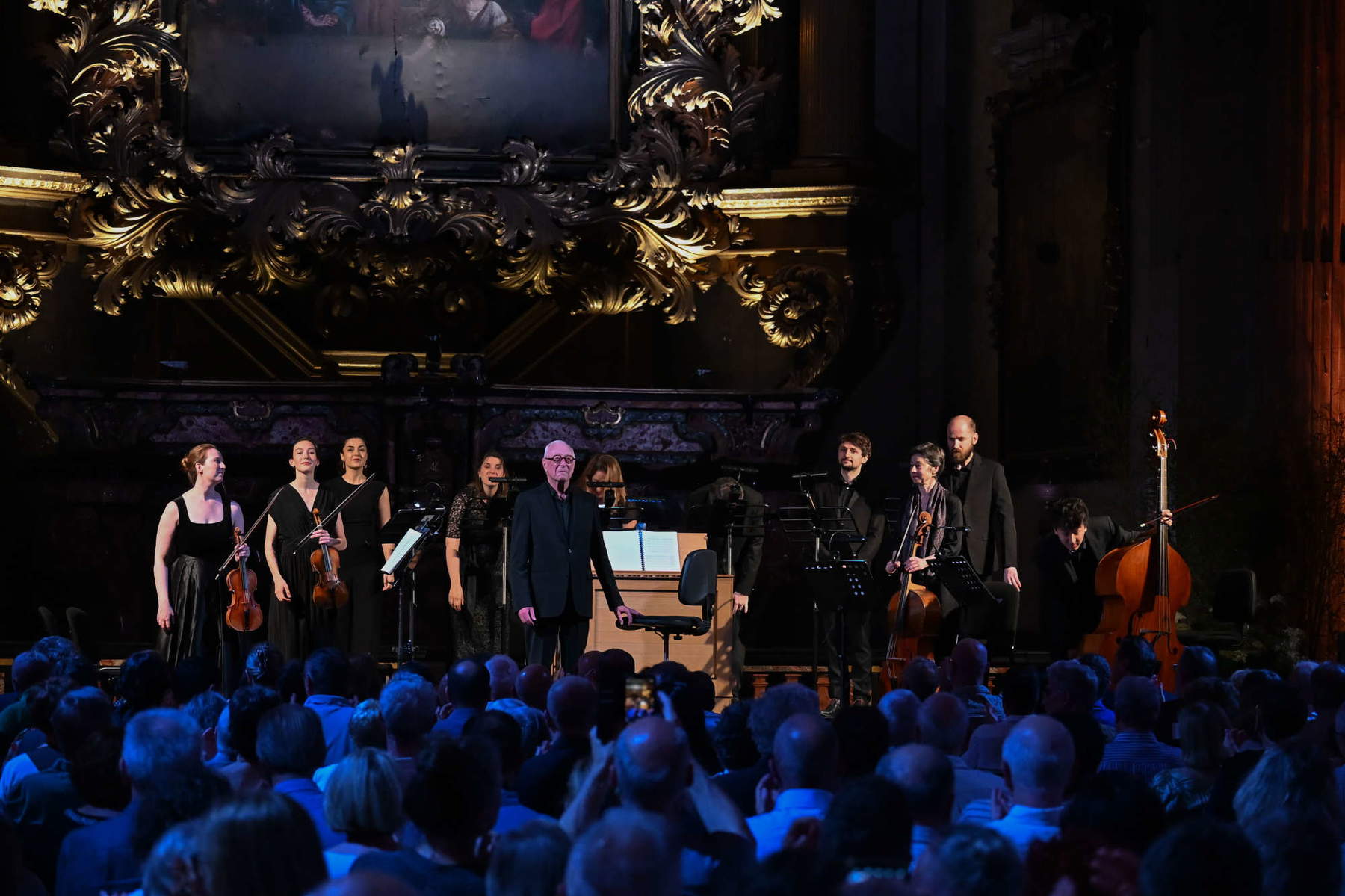
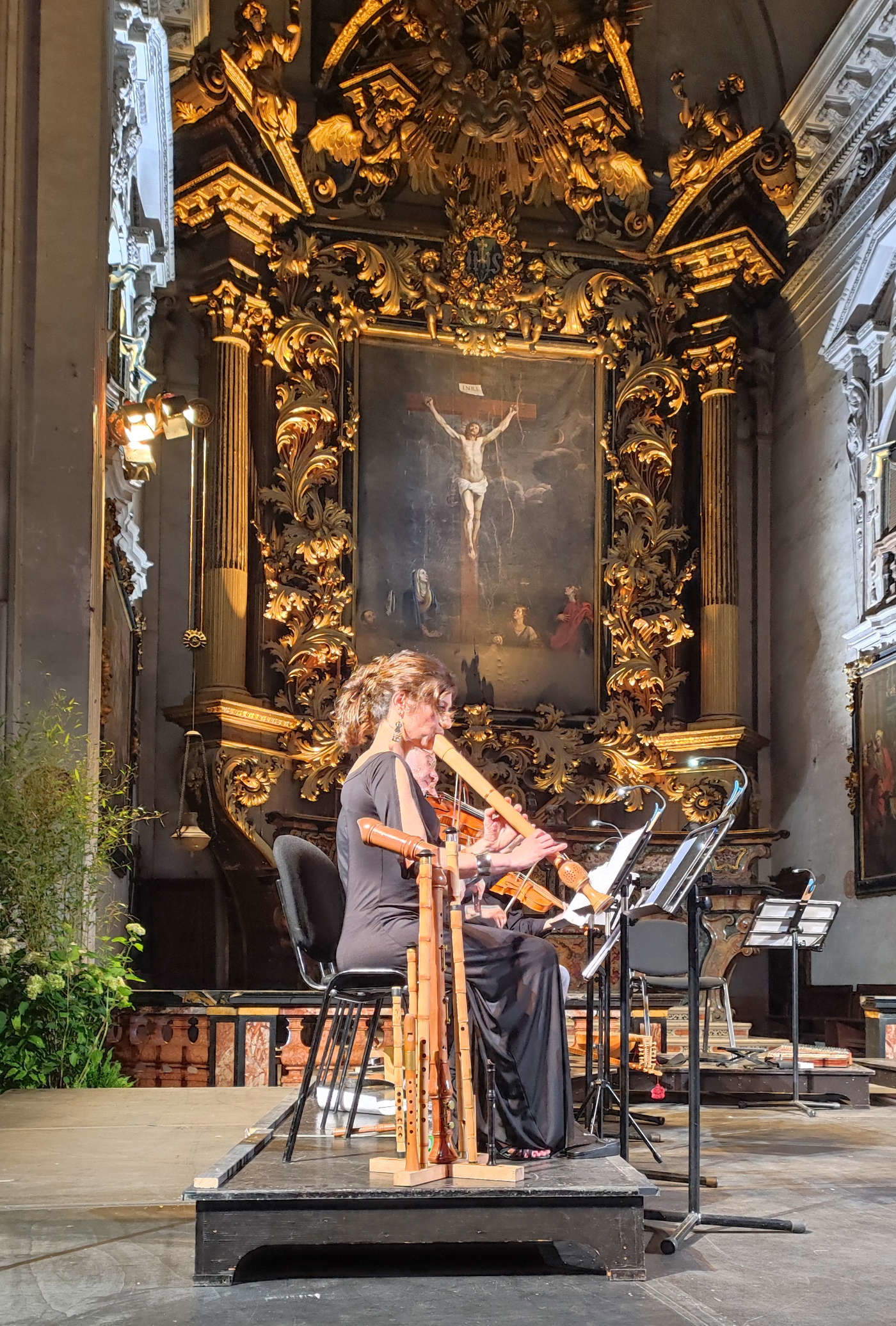
The most interesting case in this regard is undoubtedly that of the church of Saints Peter and Marcellinus, because of the importance of the property, its current conditions of accessibility and because many festival events have been held there. The grand church attached to the Jesuit college, opened for worship in 1608, constitutes the most important sacred building of the Baroque period in Cremona: the exterior is striking for its majestic façade, which has remained unfinished and is punctuated by gigantic fluted Corinthian pilasters, while the single-aisle interior preserves, in addition to a whole series of significant works in the side chapels, an impressive gilded wooden high altar, which provided a most appropriate backdrop for the various concerts of seventeenth-century music. The altar, carved in the second half of the 17th century by Giacomo Bertesi, features an exuberant decoration of acanthus scrolls, which frames the altarpiece, painted in the early 17th century by Cremonese painter Gervasio Gatti and depicting The Baptism of Pauline. An altarpiece that is not normally visible, however, because it is covered, with a typically Jesuit taste of ’I see and I don’t see’ (think of what happens at the Gesù in Rome with the statue of St. Ignatius...), by another and later canvas depicting the Crucifixion.
St. Marcellinus represents a case of heritage in distress: the church, while not presenting structural problems, needs urgent restoration work, as evidenced by the propped-up main entrance. For years there have been questions in the city about the future use of this building: the most recent moment of reflection on this issue was represented by a significant conference held in October 2023. The prevailing idea is to make it an auditorium, but without giving up its use as a place of worship. The large hall of the church actually lends itself very well, as reiterated by the concerts of the last edition of the festival, to use as a concert hall, perhaps further facilitated by interventions to improve its acoustics.
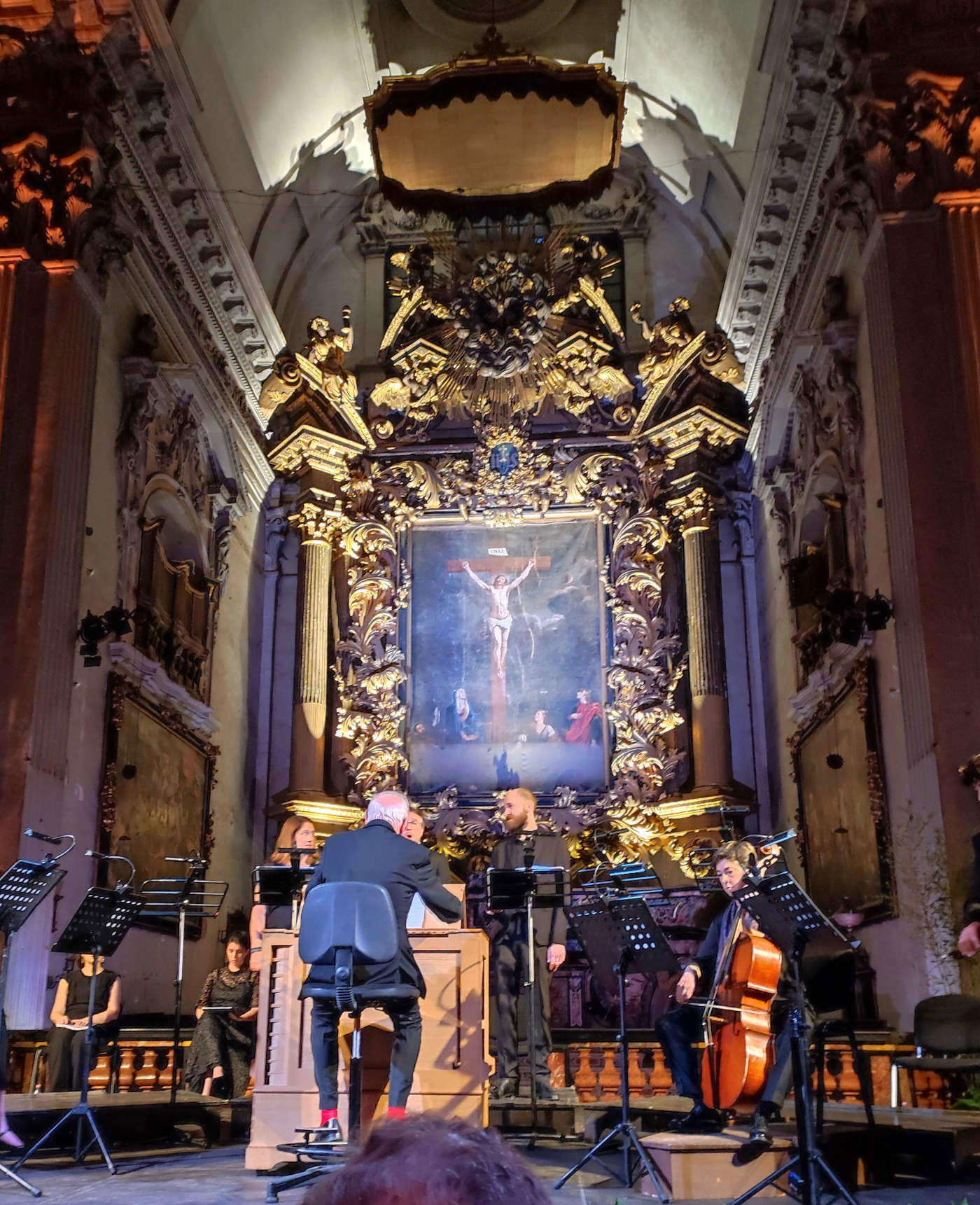
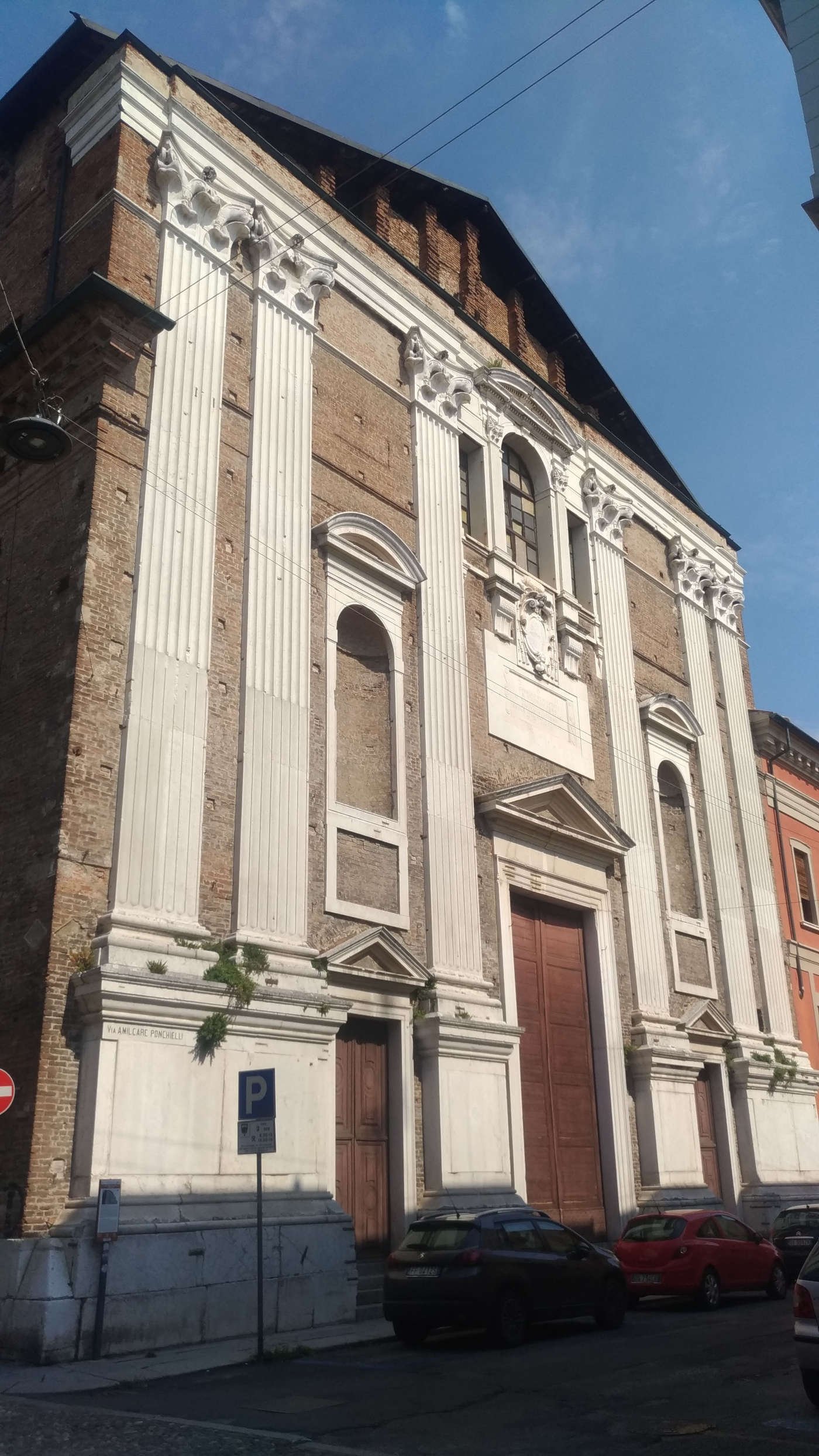
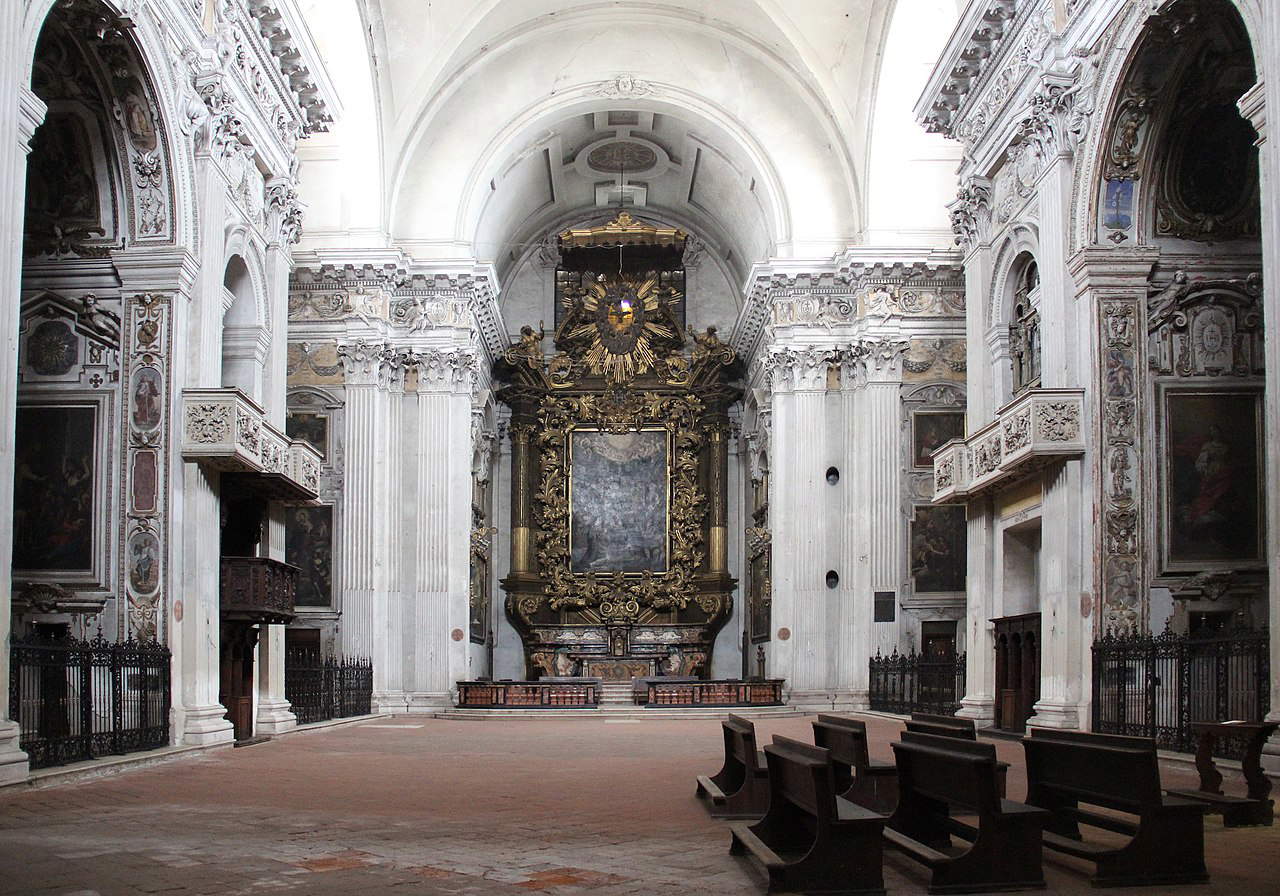
Some of the most exciting events of the festival took place in San Marcellino. On the evening of May 29, by way of a preview of the event, a splendid performance of the Vespers of the Blessed Virgin was held there, featuring Ottavio Dantone and his Accademia Bizantina. Giordano Antonelli, conducting the ensemble Musica Antiqua Latina, offered a most intriguing program on the evening of June 19, which revolved around the Combattimento di Tancredi e Clorinda: the performance of Monteverdi’s masterpiece was accompanied by that of vocal and instrumental music from the Crusades era, from both the Muslim and Christian fronts. The idea of the concert, in short, was to acquaint the audience with the sound environment in which the ’real’ Tancredi and Clorinda moved, centuries before Tasso and Monteverdi, the one that must have echoed in their ears as they set out for the bloody confrontation, fatal for the heroine. Beautiful was the closing with Orazio Vecchi’s madrigal “Clorinda hai vinto,” with its concluding invocation of peace that resonated as fittingly as ever for a land still, as then, ravaged by war. Speaking of Combattimento, it should be mentioned that this year marks the 400th anniversary of its first Venetian performance (and yes, it’s not just the 200th anniversary of Beethoven’s Ninth...): for this reason, the composition was one of the protagonists of this year’s edition of the Monteverdi Festival, with no less than three performances. In addition to the one proposed by Antonelli, there was the masterful and touching one by Antonio Greco and Cremona Antiqua (which we saw, in concert form, at the Trame Sonore festival in Mantua and which in Cremona was revived in stage form, directed by Roberto Catalano) and the contemporary reinterpretation operated by the Fedra Ensemble, for voice, violin, double bass and synthesizers (Cortile di Palazzo Guazzoni Zaccaria, June 21 and 22).
Returning to San Marcellino, Antonelli’s concert was followed, on the evening of June 20, by that of a ’legend’ of early and Baroque music (French first and foremost, but not only), William Christie, who with the splendid singers and instrumentalists of Les Arts Florissants offered a’impeccable reading of some pages from Monteverdi’s Moral and Spiritual Forest (such as the festive Beatus Vir), coupled with instrumental gems such as one of the “sonate concertate in stil moderno” by Dario Castello, a Venetian composer close to Monteverdi who revolutionized instrumental music and was torn from this world unfortunately too soon, at the age of twenty-nine, by the plague of 1631. A program in some ways similar was that of the concert by Federico Maria Sardelli and Modo Antiquo on June 22, which juxtaposed the Monteverdi most closely associated with traditional polyphony (the Missa In Illo Tempore) with the composer of the concerted psalms, an expression of the innovative “second prattica.”
Warning: the translation into English of the original Italian article was created using automatic tools. We undertake to review all articles, but we do not guarantee the total absence of inaccuracies in the translation due to the program. You can find the original by clicking on the ITA button. If you find any mistake,please contact us.